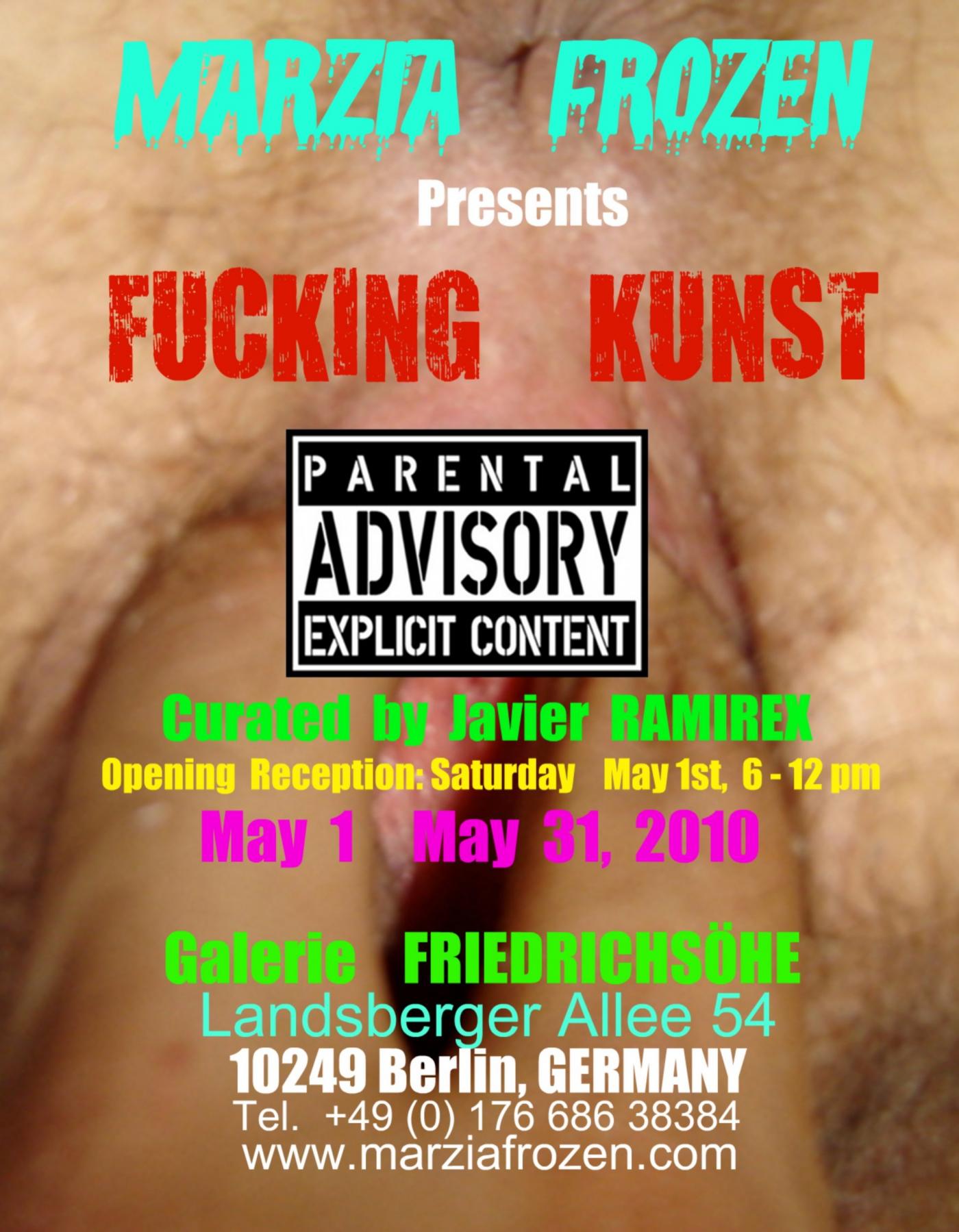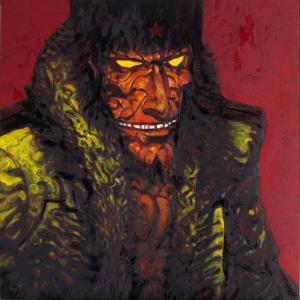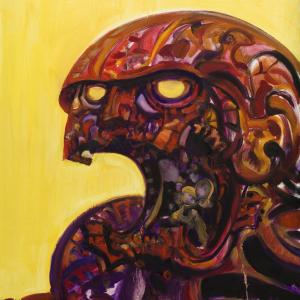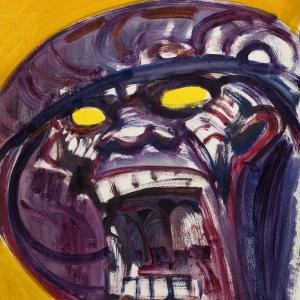Landsberger Alle 54
10249 Berlin, GERMANY
http://www.marziafrozen.com/FUCKING%20%20KUNST.html
YouTube:
Vernissage
http://www.youtube.com/watch?v=8PySStABu3U
Performance: Herma Auguste WITTSTOCK
http://www.youtube.com/watch?v=NLlYSvf_OS8
Performance: ALTIPLANO VORTEX
http://www.youtube.com/watch?v=zmbbhwvYl88
MARZIA FROZEN is pleased to announce an international group exhibition of a new generation of artists working today. This will be a group exhibition at Galerie FRIEDRICHSÖHE in Berlin, and will feature a selection of paintings, sculptures, photographs, performances and videos.
Censorship still exists today , have passed 500 years since Michelangelo Buonarroti, was banned when he painted the Sistine Chapel.The Last Judgment was an object of a bitter dispute between Cardinal Carafa and Michelangelo. Because he depicted naked figures, the artist was accused of immorality and obscenity. A censorship campaign (known as the "Fig-Leaf Campaign") was organized by Carafa and Monsignor Sernini ( Mantua's ambassador) to remove the frescoes. When the Pope's own Master of Ceremonies Biagio da Cesena said "it was mostly disgraceful that in so sacred a place there should have been depicted all those nude figures, exposing themselves so shamefully, and that it was no work for a papal chapel but rather for the public baths and taverns,"Michelangelo worked da Cesena's semblance into the scene as Minos, judge of the underworld. It is said that when he complained to the Pope, the pontiff responded that his jurisdiction did not extend to hell, so the portrait would have to remain.
The genitalia in the fresco were later covered by the artist Daniele da Volterra, whom history remembers by the derogatory nickname "Il Braghettone" ("the breeches-painter").
Francisco de Goya suffered censorship when he painted La Maja Desnuda (known in English as The Naked Maja) is an oil on canvas painting, portraying a nude woman reclining on a bed of pillows. It was executed some time between 1797 and 1800, and is sometimes said to be the first clear depiction of female pubic hair in a large Western painting.
Goya created another painting of the same woman identically posed, but clothed, entitled La Maja Vestida (The Clothed Maja); also in the Prado, it is usually hung next to La maja desnuda. The identity of the model and why the paintings were created are still unknown. Both paintings were first recorded as belonging to the collection of Prime Minister Manuel de Godoy, Duke of Alcudia, and it has been conjectured that the woman depicted was his young mistress. It has also been suggested that the woman was Maria del Pilar Teresa Cayetana de Silva y Alvarez de Toledo, 13th Duchess of Alba, with whom Goya is rumored to have been romantically involved and did complete known portraits of. However, many scholars have rejected this possibility, including Australian art critic Robert Hughes in his 2003 biography, Goya. Many agree that Pepita Tudò is a more likely candidate. Others believe the woman depicted is actually a composite of several different models.
In 1815, the Spanish Inquisition summoned Goya to reveal who commissioned him to create the "obscene" La maja desnuda, and he was consequently stripped of his position as the Spanish court painter. If Goya gave an explanation of the painting's origin to the Inquisition, that account has never surfaced. Two sets of stamps depicting La maja desnuda in commemoration of Goya's work were privately produced in 1930, and later approved by the Spanish Postal Authority. That same year, the United States government barred and returned any mail bearing the stamps.
In 1907 Paris-based Spanish artist Pablo Picasso painted Les Demoiselles d'Avignon, to an unsuspecting public. The shock waves sent out by this work without doubt easier to appreciate than the aesthetic challenge posed by the Impressionists some decades earlier. Picasso replaced the unthreatening female nude with what appeared to be a group portrait of prostitutes, and he did so in a style that did not echo his Western ancestors, but that drew upon non European art view by his contemporaries as "primitive".
In 1915, the anarchic members of the Dada movement began to wreak havoc in Switzerland. Their impact spread through Europe, eventually taking root in Germany. Two of Dada's best known German proponents are Otto Dix (1891-1969) and George Grosz (1893-1959), whose work developed into the genre known as Neue Sachlichkeit, and whose challenging brand of social and political satire is exemplified by Dix's Erinnerung an die Spiegelsale von Brussel (1920). Such works led the National Socialists to brand their art, along with that of many of their contemporaries, as degenerate.
Dadaism made its way to New York, where a key figure was the French-American artist Marcel Duchamp (1887-1968). In 1917 he created what is perhaps his best known work,Fountain, a urinal signed with one of the pseudonyms under which he worked, R. Mutt. With this work, which was excluded from the first exhibition of the New York Society of Independent Artists, Duchamp simultaneously created the first ready-made and ignited the "but is it art?" debate that continues to rage to this day.
Surrealism was born from Dada and launched in 1924 with the publication of Manifeste du Surralisme by Andr Breton (1896-1966); activity was initially centred on Paris in the 1920's and 1930's. Surrealism's most famous legacy is the precisely rendered, detailed fantasies of the Spaniard Salvador Dal (1904-89). Paintings such as Hallucination Partielle: Six Images de Lenine sur un Piano (1931), sought not only to challenge the viewer's taste, but also to disturb.
Piss Christ is a 1987 photograph by photograper Andres Serrano. It depicts a small plastic crucifix submerged in a glass of the artist's urine. The piece was a winner of the Southeastern Center for Contemporary Art's "Awards in the Visual Arts" competition, which is sponsored in part by the National Endowment for the Arts, a United State Government agency that offers support and funding for artistic projects.
The piece caused a scandal when it was exhibited in 1989, with detractors, including United State Senators Al D'Amato and Jesse Helms, outraged that Serrano received $15,000 for the work, part of it from the taxpayer-funded National Endowment for the Arts. Supporters argued the Piss Christ is an issue of artistic freedom and freedomof speech. Others alleged that the government funding of Piss Christ violated separation of church and state.
Sister Wendy Beckett , an art critic and Catholic nun stated in a television interview with Bill Moyers that she regarded the work as not blasphemous but a statement on "what we have done to Christ" - that is, the way contemporary society has come to regard Christ and the values he represents.
During a retrospective of Serrano's work at the National Gallery of Victoria in 1997, the then Catholic Archbishop of Melbourne, George Pell, sought an injunction from the Supreme Court of Victoria to restrain the National Gallery of Victoria from publicly displaying Piss Christ, which was not granted. Some days later, one patron attempted to remove the work from the gallery wall, and two teenagers later attacked it with a hammer. The director of the NGV cancelled the show, allegedly out of concern for a Rembrandt exhibition that was also on display at the time.
Piss Christ was included in "Down by Law," a "show within a show" on identity politics and disobedience that formed part of the 2006 Whitney Biennal. The BBC documentary Damned in the USA explored the controversy surrounding Piss Christ.
In June 1989,artist Lowell Blair Nesbitt became involved with a scandal involving Mapplethorpe's work. The Corcoran Gallery of Art in Washington D.C. had agreed to host a traveling solo exhibit of Mapplethorpe's works, without making a stipulation as to what type of subject matter would be used. Mapplethorpe decided to show a new series that he had explored shortly before his death, Robert Mapplethorpe: The Perfect Moment curated by Janet Kardon of the Institute of Contemporary Art. The hierarchy of the Corcoran and several members of Congress were horrified when the works were revealed to them, and the museum refused to go forth with the exhibit. It was at this time that Nesbitt, a long-time friend of Mapplethorpe, revealed that he had a $1.5 million bequest to the museum in his will. Nesbitt publicly promised that if the museum refused to host the exhibition he would revoke his bequest. The Corcoran refused and Nesbitt bequeathed the money to the Phillips Collection instead.
After the Corcoran refused the Mapplethorpe exhibition, the underwriters of the exhibition went to the nonprofit Whashington Project for the Arts which showed the controversial images in its own space from July 21 - August 13, 1989, to large crowds.
In 1999 the exhibition SENSATION was shown in New York City at the Brooklyn Museum of Art from 2 October 1999 to 9 January 2000. The New York show was met with instant protest, centering on The Holy Virgin Mary by Chris Ofili, which had not provoked this reaction in London. While the press reported that the piece was smeared with elephant dung, Ofili's work in fact showed a carefully rendered black Madonna decorated with a resin-covered lump of elephant dung. The figure is also surrounded by small collaged images of female genitalia from pornographic magazines; these seemed from a distance to be the traditional cherubim.
It was Chris Ofili who found himself at the center of the storm in New York. Ofili had already experienced controversy when he too won the Turner Prize in 1998. His intricately patterned mixed-media works draw on his Nigerian heritage and are characterized by their inclusion of elephant dung. The focus of the outrage was The Holy Virgin Mary (1996): a mixed media painting/collage depicting a black madonna, surrounded by images of buttocks, with the addition of the ubiquitous dung. Ofili stayed well out of the affray as his work was branded blasphemous.
New York Mayor Rudolph Giuliani, who had seen the work in the catalogue but not in the show, called it "sick stuff" and threatened to withdraw the annual $7 million City Hall grant from the Brooklyn Museum hosting the show, because "You don't have a right to government subsidy for desecrating somebody else's religion." Cardinal John O'Connor, the Archbishop of New York, said, "one must ask if it is an attack on religion itself," and the president of America's biggest group of Orthodox Jews, Mandell Ganchrow, called it "deeply offensive". William A. Donohue, President of the Catholic League for Religious and Civil Rights, said the work "induces revulsion". Giuliani started a lawsuit to evict the museum, and Arnold Lehman, the museum director, filed a federal lawsuit against Giuliani for a breach of the First Amendment.
Hillary Clinton spoke up for the museum, as did the New York Civil Liberties Union. The editorial board of The New York Times said, Giuliani's stance "promises to begin a new Ice Age in New York's cultural affairs."The paper also carried a full-page advertisement in support signed by over 100 actors, writers and artists, including Susan Sarandon, Steve Martin, Norman Mailer, Arthur Miller, Kurt Vonnegut and Susan Sontag. Ofili, who is Roman Catholic, said, "elephant dung in itself is quite a beautiful object.
FUCKING KUNST is an exhibition of contemporary art that encourage artists to express without any censorship and is against of any repression of freedom of Expression.
Daniele AFFERNI - Alberto BACCARI - Gabriele BONATO - Dr. Lusine BREITSCHEIDEL - Antonio CHIERICI - Lan HUNGH - Gilberto GIARDINI - -Javier RAMIREX - Banafshef RAHMANI - Lisbeth Dal POZZO - Astrid STöFHAS - Anne-Marie SOMMER - Michele - PRINCIPATO - Jean SOBIESKI - Mario TONINO - Angela VINCI










Commenti 0
Inserisci commento